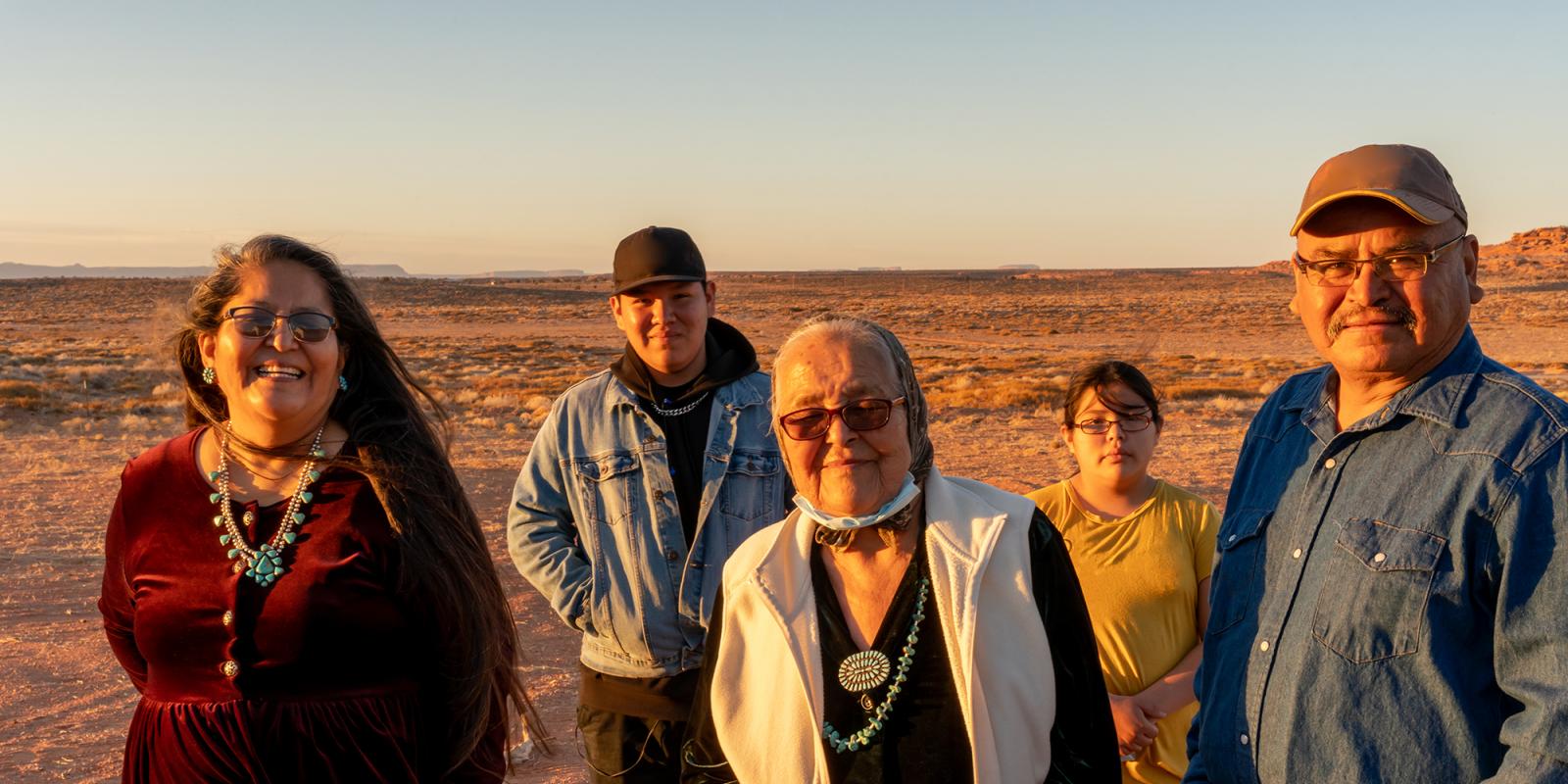In the realm of holistic well-being and cultural preservation, senior nutrition programs play a crucial role in increasing access to traditional diets and improving the health of Native elders. Almost 800,000 people ages 65 and older identify as American Indian, Alaskan Native or Native Hawaiian and Other Pacific Islander.
Many live in rural areas, with higher food costs, decreased access to healthcare and healthy foods, and elevated risk of chronic disease and malnutrition. With one in seven older Native Americans facing hunger or food insecurity, providing culturally appropriate meals through senior nutrition programs has the potential to impact many elders.
The Older Americans Act: Title VI and III Nutrition Programs in Action
The Older Americans Act nutrition program serves as a fundamental federal program addressing hunger, food insecurity and malnutrition among older adults. The nutrition programs include congregate meals, home-delivered meals, nutrition services and commodities for those ages 60 and older. The Title VI OAA nutrition program operates in conjunction with the sovereign governments of more than 420 tribes and villages and is specifically tailored to the needs of elders in tribal communities.
The Title III nutrition program serves older adults across the country and some local Title III programs may support Native Americans, particularly those elders living in urban areas. Both programs aim to tackle chronic conditions, address food deserts, alleviate food insecurity, and promote social engagement through multiple supportive and nutrition services.
Many Native American Elders at High Nutrition Risk
Many OAA Title VI and III nutrition programs screen for nutrition risk, food insecurity and malnutrition to help them refer elders to a local clinician (clinical dietitian, dentist or physician), food bank or food distribution program, or other resources. This process (often using the Determine Your Nutritional Risk checklist) assesses nutrition risk by investigating risk factors such as disease, eating habits, economic hardships, social interactions, medications, involuntary weight loss, and need for assistance with daily self care. In the Inter Tribal Council of Arizona Area Agency on Aging-Region 8, a significant percentage of elders were found to be at high nutrition risk (score of 6+, see Figure, below).
Specifically, 34.7% of congregate meal participants and a more alarming 62.6% of home-delivered meal participants were at high nutrition risk. These statistics underscore the urgent need for targeted interventions to improve the nutrition status of Native American elders.
Figure
Source: Arizona Department of Economic Security-Division of Aging & Adult Services Reporting System, Inter Tribal Council of Arizona, Area Agency on Aging, Region 8, Title III Nutritional Assessment Data
Whole Person Initiatives to Address Nutrition Risk
Education and awareness play pivotal roles in promoting healthier food choices and lifestyles among older adults, including Native American elders. Tribal nutrition programs offer evidence-based programs, providing practical tools for managing chronic conditions and preventing falls. Elders also benefit significantly from community events, immersive cooking workshops, and access to valuable resources like nutrition facts label education programs and locally created cookbooks. The Arizona program also includes multigenerational meal planning, cooking, and storytelling. By fostering a culture of continuous learning and empowerment, tribal nutrition programs contribute substantially to the holistic health and well-being of Native American elders.
Support Growing for Challenges Faced by Tribal Nutrition Programs
Despite dedicated efforts, tribal nutrition programs face challenges. Staff turnover is high. Transportation is needed, as very few tribes have a bus system on the reservation. Rising food and supply prices limit how many meals a program can provide, with tribes unable to buy traditional foods from vendors and smaller tribes not meeting vendor minimum-order requirements. Some programs must travel more than two hours just to shop for food every week. Some reservations and Alaskan villages are only accessible by helicopter, plane, or boat, making food deliveries/transportation unreliable. Senior nutrition program meals must follow the Dietary Guidelines for Americans, yet nutrition analysis software lacks many traditional foods.
‘Some programs must travel more than two hours just to shop for food every week.’
Technical assistance, research and education and awareness trainings led by the Administration for Community Living (ACL) have started addressing these challenges. ACL’s Title VI website hosts a Native Food Directory and the Indian Health Service has developed a Native plate for nutrition education.
Nonprofits like First Nations Development Institute provide grants to increase food security and access to traditional foods and the Indigenous Food and Agriculture Initiative provides resources to promoting tribally driven solutions in food sovereignty.
The Working with Tribal Nations training from the National Indian Health Board or Changing the Narrative about Native Americans: A Guide for Allies can be useful resources for non-natives who want to work with tribes. See our recent ICAA webinar for more information.
For more traditional recipes, First Nations Development Institute has several cookbooks, the USDA’s Food Sovereignty initiative shares native recipes and cooking videos, the Food Distribution Program on Indian Reservations (FDPIR) Sharing Gallery has recipes and other resources, and the International Association for Indigenous Aging’s Healthy Food, Healthy Brain Rack Card Series provides practical advice and recipes.
The fight for nutrition security and food sovereignty among Native American elders is complex but crucial. Senior nutrition programs, a valued local support armed with an understanding of elders’ needs and a commitment to education and empowerment, have the power to enhance the health and well-being of Native American elders in tribes and urban areas, ensuring they receive the nourishment required for a thriving, fulfilling life. With further collaboration, we can better connect these programs to successfully serve the elders who need them most.
Heidi Robertson, MPH, is a nutrition consultant for Older Americans Act Title III and VI Programs. Nanette Taho is a Dietetic Technician, Registered (DTR) and a program manager for the Inter Tribal Council of Arizona Area Agency on Aging-Region 8. She is a member of the St. Regis Mohawk Tribe.













